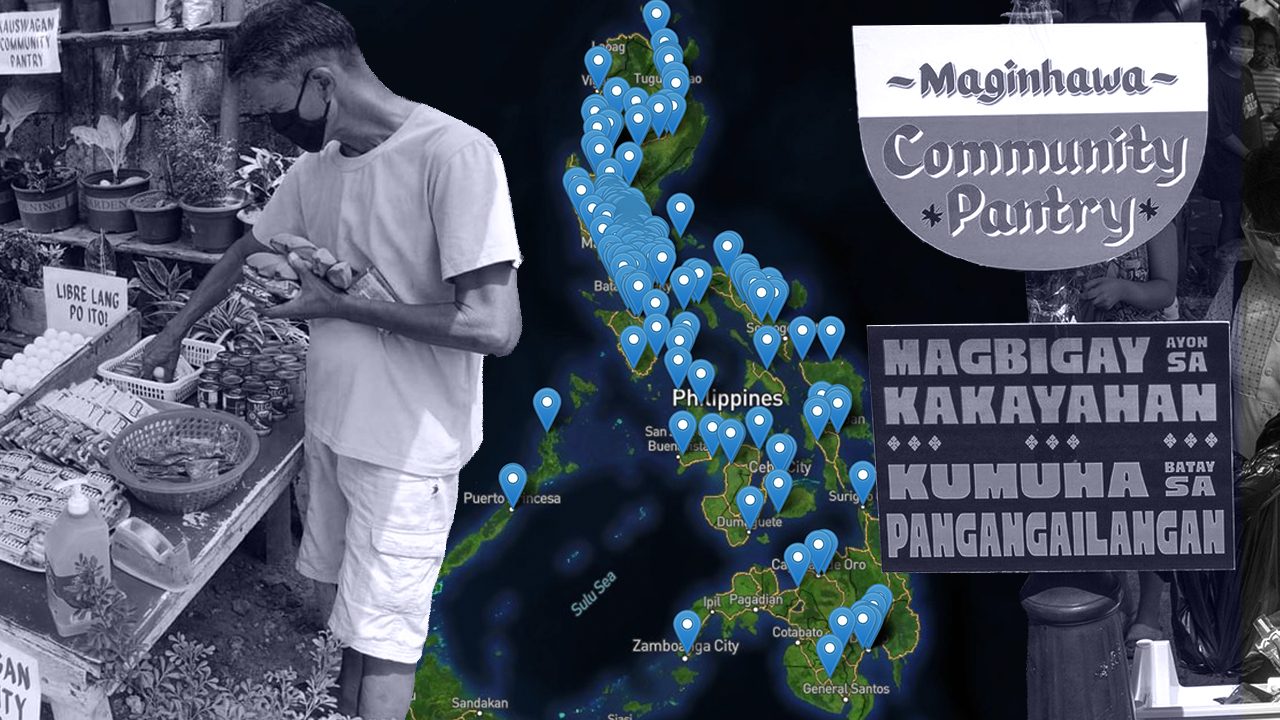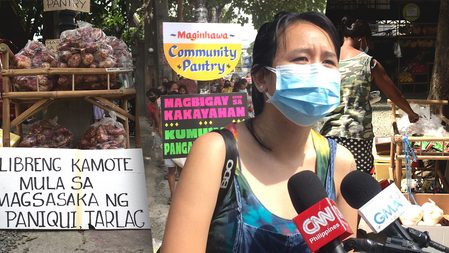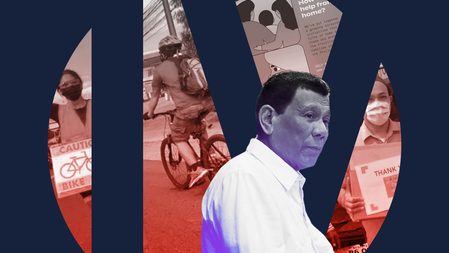SUMMARY
This is AI generated summarization, which may have errors. For context, always refer to the full article.

From just one trailblazing community pantry in Maginhawa, there are now hundreds of others that have sprouted across the Philippines as people adopted the initiative in their own communities.
Complementing this rise of bayanihan, several mapmakers and mapping advocates spearheaded their own initiatives to collate these community pantries and make the information easily accessible to Filipinos who are willing to help.
Taking off from their efforts to map available food deliveries during the quarantine period, members of crowdsourcing initiative “Saan Yan PH” created a platform that allows people to plot locations of community pantries that they’ve spotted in one platform, with the help of geospatial workers from the Ministry of Mapping.
Dubbed Saan May Community Pantry?, the platform not only pins locations but also features other relevant details about community pantries such as contact details, schedules, and items. These are details which people can also send via Saan Yan PH’s form. The platform has 358 community pantries mapped out, as of April 22.
Focused on food and agriculture, nonprofit organization and digital learning platform Tagani.org created a community pantries map, with the help of Limitless Lab, volunteer alumni of Young Southeast Asian Leaders Initiative, and volunteers from Community Pantry PH. Already housing at least 221 entries, the platform offers people an opportunity to submit locations and help verify the status of various community pantry entries via their form.
Visualizing volunteerism
Andi Tabinas, a Saan Yan PH member who helped spearhead the community pantries map, said the initiative was driven by an advocacy for “community care” and “intentionally showing compassion” to other people.
Tabinas added that mapping out how one can genuinely help others during this pandemic is their way of practicing and encouraging “volunteerism.”
“We wanted to show where these mutual aid locations are available so people could see where to barter their supplies or donate what they could, especially to new and smaller community pantries. If information about their locations and how they can be reached are shared to the communities, more people can benefit from these pantries and also donate to them,” Tabinas said.
As a tool to visualize where people and help, both Saan Yan PH and Tagani.org hoped that their interactive maps can encourage the ordinary Fiipino to see how they can help fill in missing gaps in the country.
This is not the first time that mapmakers have complemented bayanihan efforts. Saan Yan PH, for instance, had helped pinpoint stores open for delivery during the onset of last year’s lockdown.
Maintaining community effort
As these initiatives try to continue to plot the deluge of community pantries, Tabinas and Tagani.org CEO Kevin Tagani shared how their efforts faced roadblocks when pantry organizers were being red-tagged. Government-linked groups earlier described community pantries as vehicles for communist propaganda – an accusation which human rights groups condemned.
“Now that community pantries are being red-tagged, we have to conceal some data such as the organizers’ contact information unless requested directly,” Tagani shared.
Another challenge that both Saan Yan PH and Tagani face is locating and verifying data.
Having to balance people’s safety and their duty to map data accurately, Tagani stressed the importance of data verification so donors can support real and active pantries. To ensure all crowdsourced data have been thoroughly verified, Tagani shared that they double check with their volunteers all details in the entries before they are reflected on the map. They’ve also worked with volunteers and organizations such as Community Pantry PH.
The Saan May Community Pantry? map, meanwhile, shows crowdsourced data which their team and volunteers are in the process of verifying.
Tabinas and Tagani emphasized the importance of volunteerism and getting the community involved to help fasttrack their operations and provide information to the public.
“We need a lot of help from those with local knowledge of these places to map these community pantries,” Tabinas said.
Despite the hurdles of data verification, red-tagging threats, and personal time-management, Tabinas and Tagani stressed the need to amplify efforts that promote helping communities and food security during the pandemic.
“We might have sleepless nights from doing these things, but we know there are a lot in worse situations right now, so we want to help, even through small initiatives like these maps and information-sharing,” Tabinas said.
Responding to poor governance
Tagani and his team hope to sustain the advocacy for food security by setting up a nonprofit coalition named Lusog Lahat that can “help incubate and accelerate these [food] initiatives and organizations.”
Tagani said they were inspired to do this after seeing both the operations of food banks in the United States and the rise of community pantries in the Philippines.
More than just encouraging Filipinos to participate in the spirit of bayanihan, Tagani expressed their organization’s hope to help Filipinos and policymakers “visualize food insecurity in the country.”
“By looking at the map, we can see that most of those with community pantries are in populated areas near communities where homeless people and lower-income brackets live…. Like any other tool, Maps can be helpful for policymakers if they treat it as useful,” Tagani said.
“[These community pantry maps] could help raise awareness amongst Filipinos that there is a food security issue in the country and could also support our call for more sustainable food resources that could be addressed by the government,” Tabinas added.
Acknowledging that visualizing volunteerism may not be the solution to the country’s hunger problem, Tagani said mapping community pantries is nonetheless important as it is “a response to poor governance,” and an invitation to Filipinos to help in the ways they can and demand responsibility from government.
Tabinas said though “there’s no perfect government” and mapmaking fills in the gaps.
“I hope our government can learn from these situations and responses can be improved,” she said. – Rappler.com
Eala Nolasco is a Junior Interdsciplinary Studies major from Ateneo de Manila University. She is currently a MovePH intern.
Add a comment
How does this make you feel?


There are no comments yet. Add your comment to start the conversation.